From Balconies to Backyards: 15 Innovative and Sustainable Landscape Designs Ideas
At this year’s RHS Chelsea Flower Show the latest trends showcased in landscape design, emphasized sustainability and adaptation to changing environmental conditions. Whether you have a sprawling backyard or a cozy balcony, these trends offer inspiration for creating beautiful, eco-friendly spaces.
The question is how can we incorporate some of these landscaping ideas into our own gardens. Below we will explore fifteen innovative landscape designs that incorporate elements like water features, climate-resilient plants, and natural materials. Each design is tailored to fit various garden sizes and styles, ensuring that every outdoor space can become a lush, sustainable haven. Dive in to discover how you can transform your garden into a modern, green retreat.
#1. Modern Minimalist Retreat
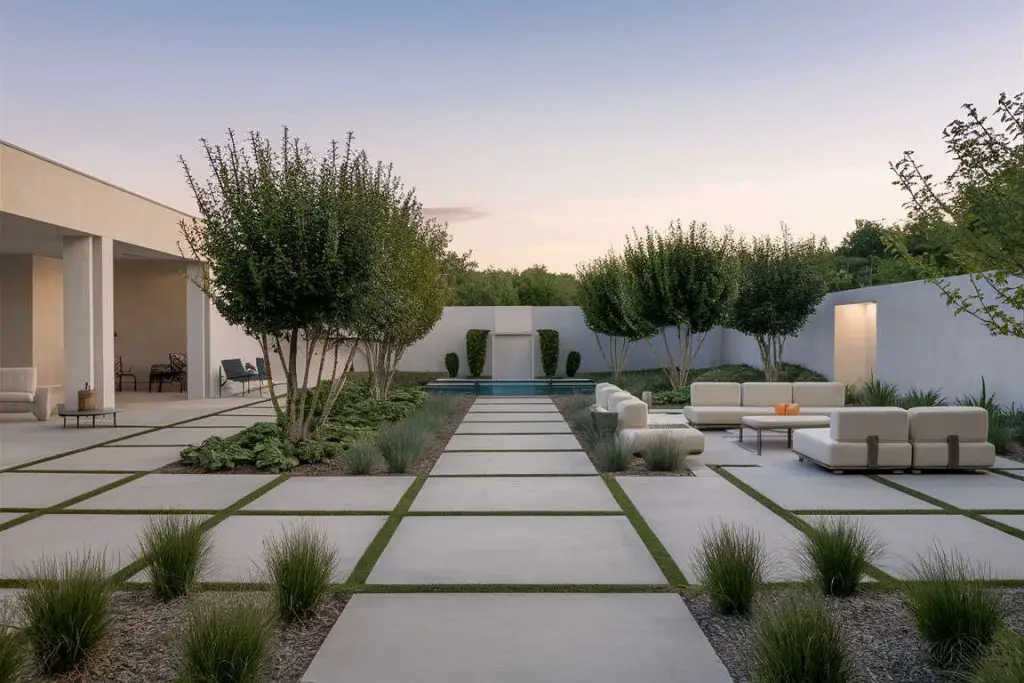
Description:
A sleek, uncluttered space with a focus on simplicity and functionality. This layout emphasizes clean lines, neutral colors, and a harmonious blend of natural and man-made elements.
Key Features:
- Geometric Hardscaping: Use concrete or stone pavers arranged in clean, geometric patterns to create walkways and patio areas.
- Minimalist Furniture: Opt for simple, functional outdoor furniture in neutral tones. Consider pieces with hidden storage to maintain the minimalist aesthetic.
- Greenery with Structure: Select plants that have a strong architectural presence, such as tall ornamental grasses, sculpted shrubs, and succulents. Arrange them in symmetrical patterns for a cohesive look.
- Water Feature: Incorporate a sleek, modern water feature like a rectangular reflecting pool or a wall-mounted fountain to add a tranquil ambiance.
- Subtle Lighting: Use understated, low-profile lighting to highlight pathways, plants, and architectural features without overwhelming the space.
#2. Water Garden
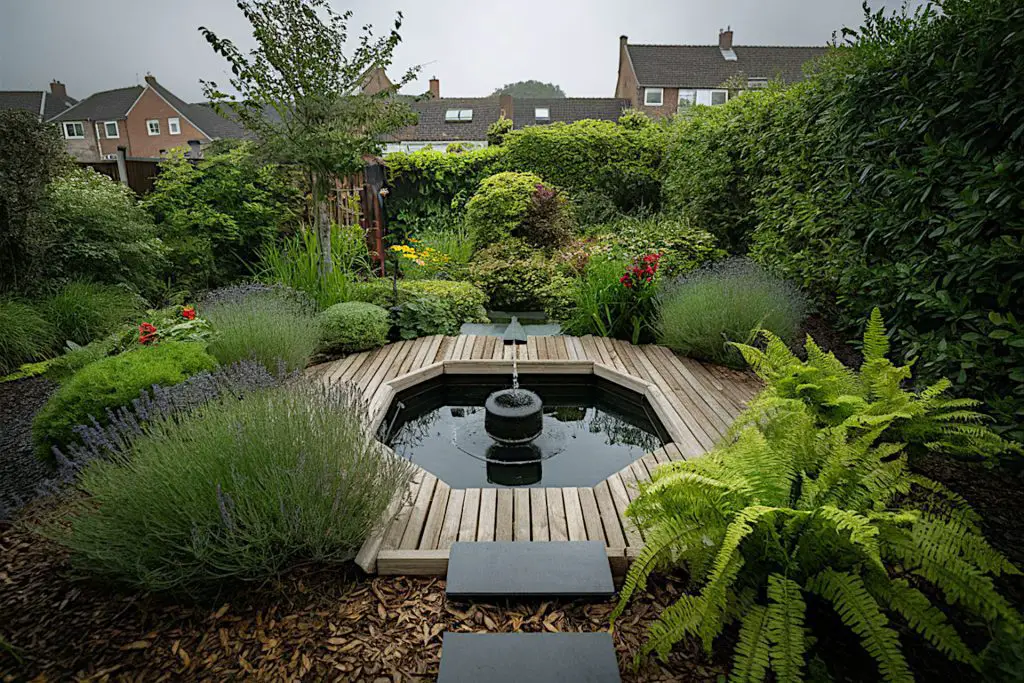
- Description: Integrate a small pond or fountain as the central feature. Surround it with a mix of sun-loving plants like lavender and shade-tolerant ferns. Use timber decking to create a cozy seating area near the water feature.
- Size: Suitable for small to medium-sized gardens.
#3. Rustic Cottage Garden
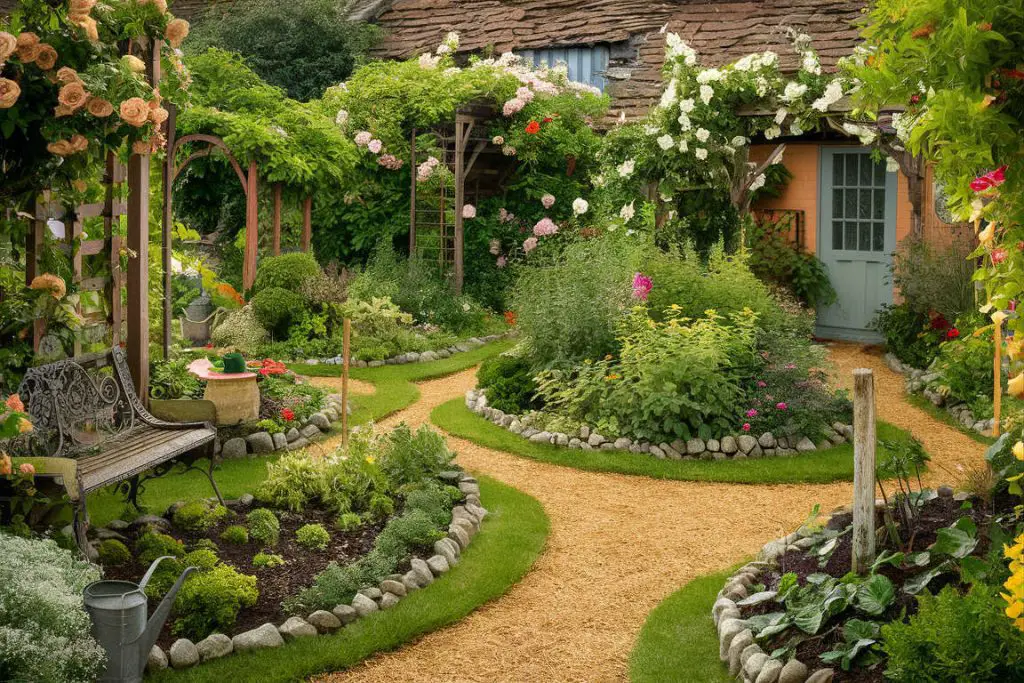
Description:
A charming, cozy space that evokes the feeling of an English countryside garden. This layout is perfect for those who love a whimsical, romantic vibe with a touch of nostalgia.
Key Features:
- Curved Pathways: Create meandering stone or brick pathways that invite exploration and give the garden a natural, informal feel.
- Mixed Borders: Plant a variety of flowers, herbs, and shrubs in densely planted borders. Use a mix of colors and textures to create a lush, layered look.
- Vintage Accents: Incorporate antique or vintage garden ornaments, such as wrought iron benches, old watering cans, and birdbaths, to add character.
- Vegetable Patch: Dedicate a small area for a vegetable garden or a few raised beds. Mix edible plants with ornamental flowers for a functional and beautiful space.
- Arbors and Trellises: Install wooden arbors and trellises covered with climbing roses, honeysuckle, or clematis to create enchanting entryways and focal points.
#4. Timber Terrace
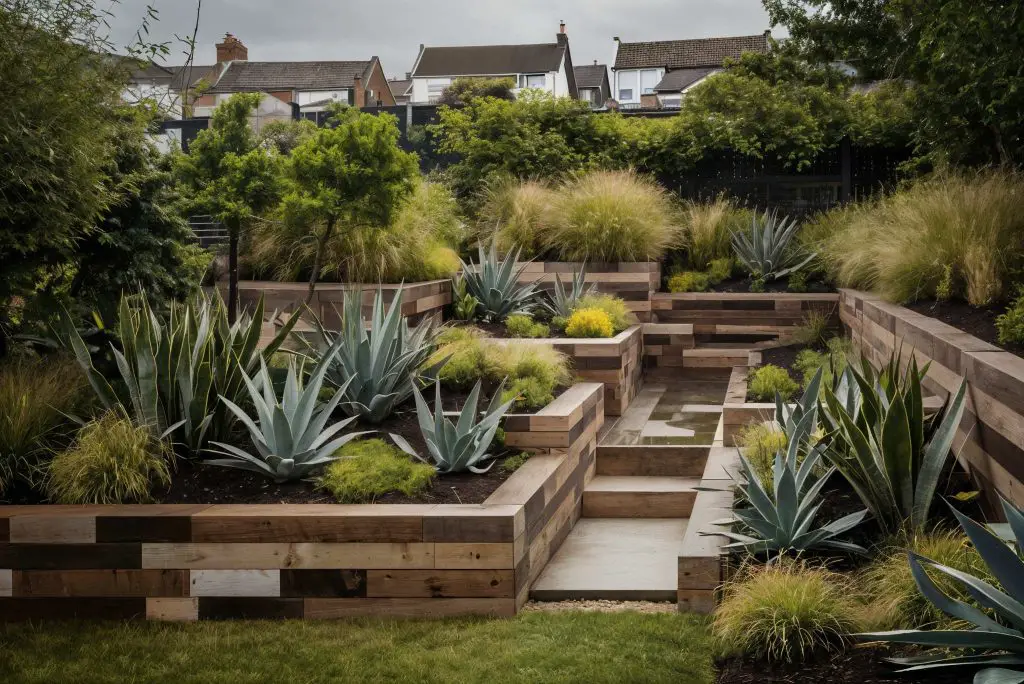
- Description: Create a layered garden with timber terraces. Plant climate-resilient species such as drought-tolerant succulents and ornamental grasses on each level. Use reclaimed timber for pathways and retaining walls.
- Size: Suitable for sloped gardens of all sizes.
#5. Urban Balcony Retreat
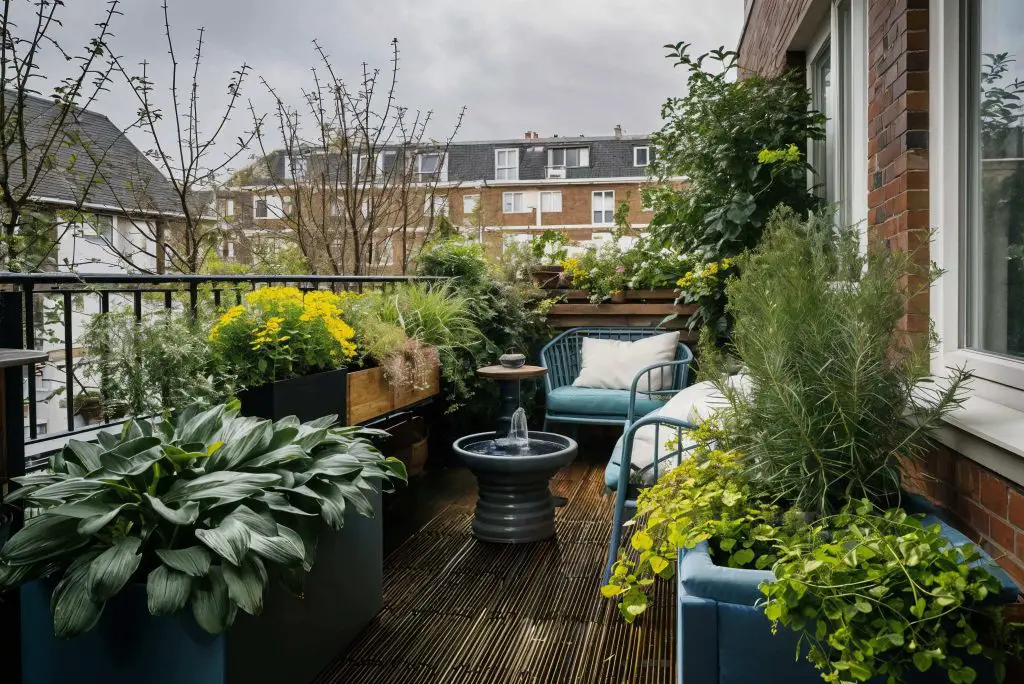
- Description: Transform a balcony into a green haven with container gardens. Use a mix of shade-tolerant plants like hostas and sun-loving herbs like rosemary. Incorporate a small water feature, such as a tabletop fountain, for ambiance.
- Size: Perfect for urban balconies.
#6. Sustainable Shade Garden
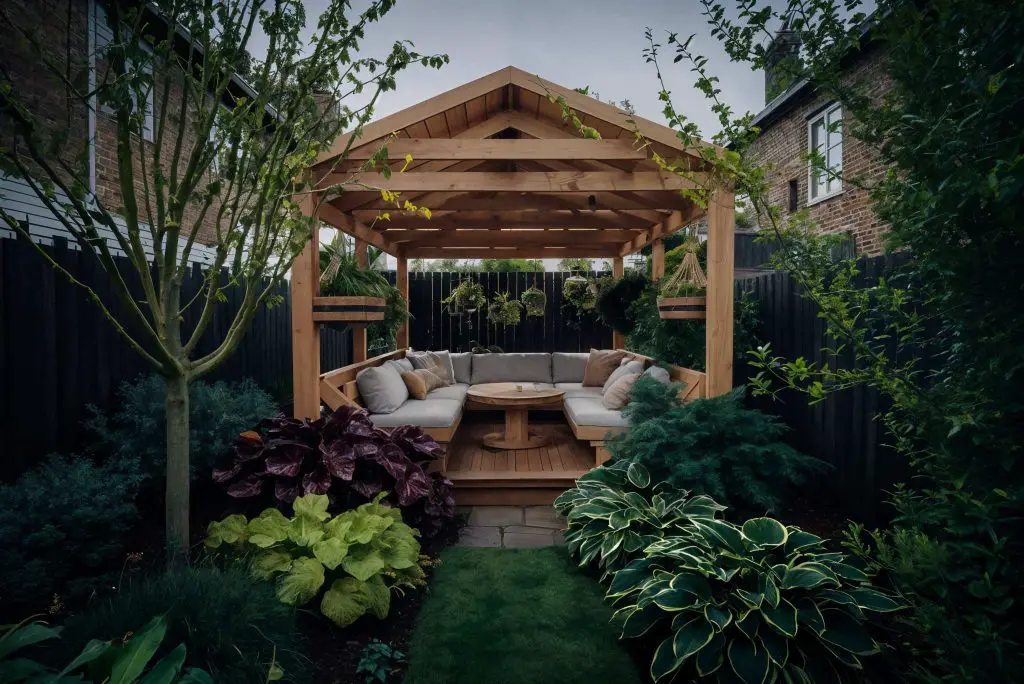
- Description: Design a garden with a focus on shade-tolerant plants like heucheras and hostas. Add a pergola made from sustainable timber to provide additional shade and a focal point for hanging plants.
- Size: Ideal for small gardens with limited sunlight.
#7. Eco-Friendly Haven
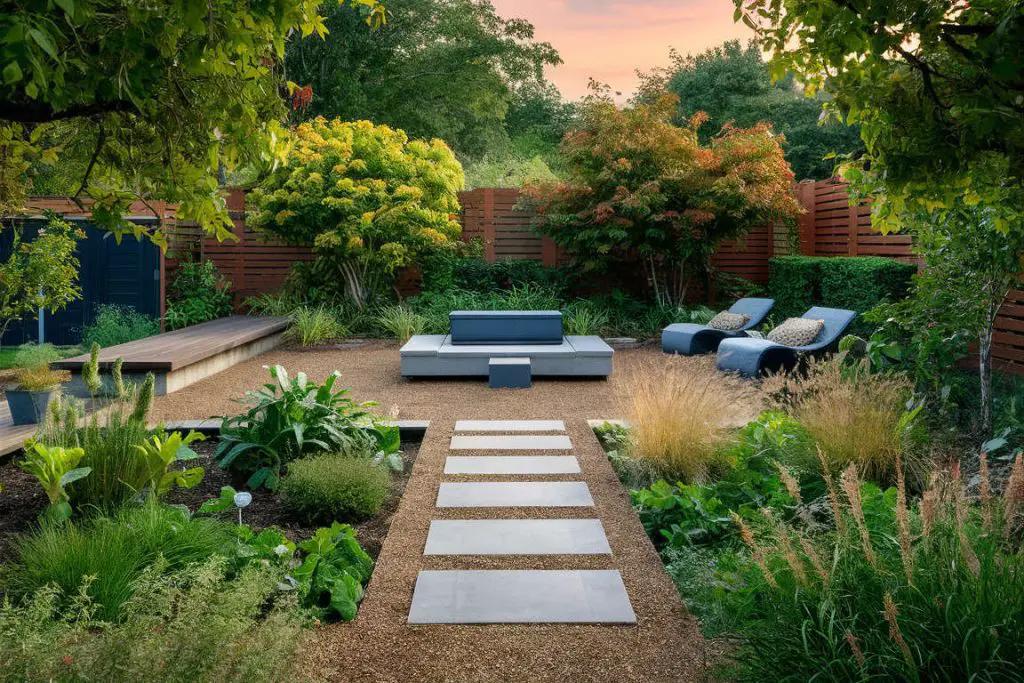
Description
A sustainable, low-maintenance garden that prioritizes environmental responsibility and natural beauty. This layout incorporates native plants, recycled materials, and eco-friendly practices.
Key Features:
- Native Plantings: Use plants that are native to your region, as they require less water and maintenance. Group them in clusters to create natural-looking habitats for local wildlife.
- Rain Garden: Design a rain garden to capture and filter runoff, using plants that thrive in both wet and dry conditions. This helps manage water sustainably and prevents erosion.
- Permeable Surfaces: Opt for permeable materials for pathways and patios, such as gravel, decomposed granite, or permeable pavers, to allow water to seep into the ground.
- Composting Area: Include a composting bin or area to recycle garden waste and create nutrient-rich soil for your plants.
- Solar Lighting: Use solar-powered lights to illuminate the garden in an eco-friendly way. Place them along pathways and near seating areas for both safety and ambiance.
#8. Climate Resilient Rock Garden
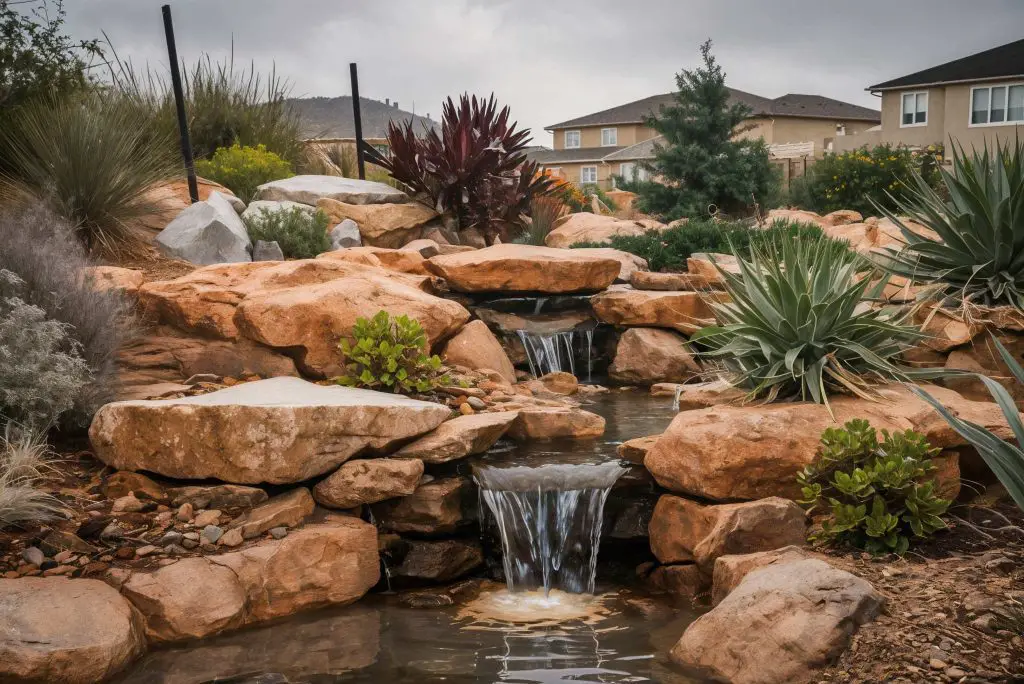
- Description: Use natural stone to create a rock garden featuring climate-resilient plants such as sedums and yuccas. Add a small waterfall to enhance the aesthetic and create a supportive microclimate. In addition this can be a great way of dealing with a sloping garden.
- Size: Suitable for small to medium-sized gardens.
#9. Lush Container Garden
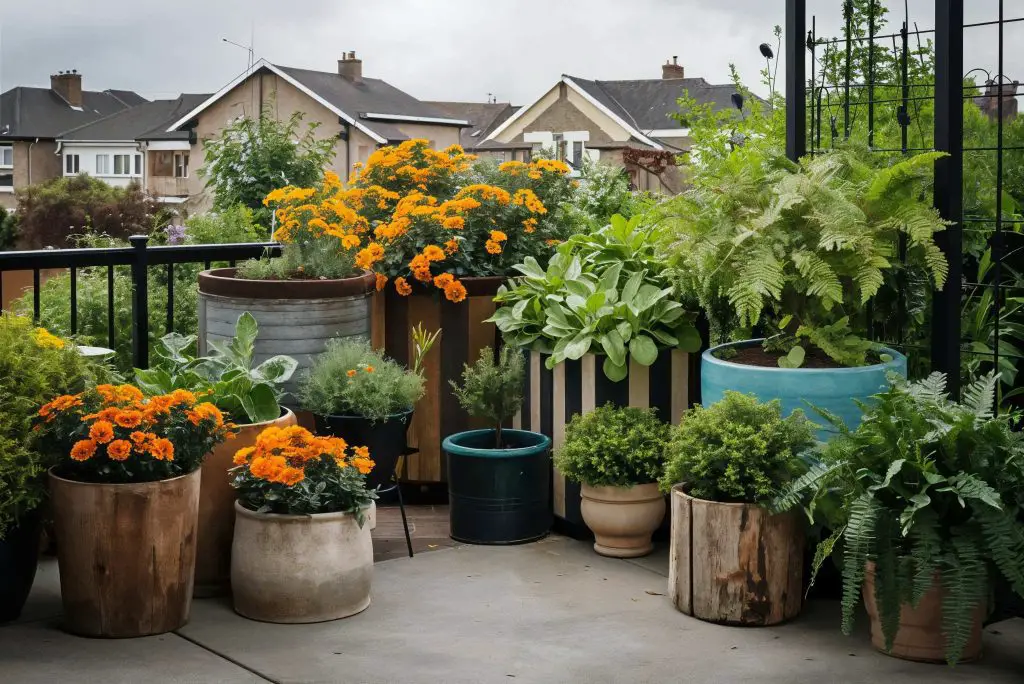
- Description: Arrange a variety of containers with different sizes and heights. Plant a mix of sun-loving flowers like marigolds and shade-tolerant foliage plants like ferns. Incorporate timber containers for a rustic touch.
- Size: Great for patios and small spaces.
#10. Eco-friendly Woodland Garden
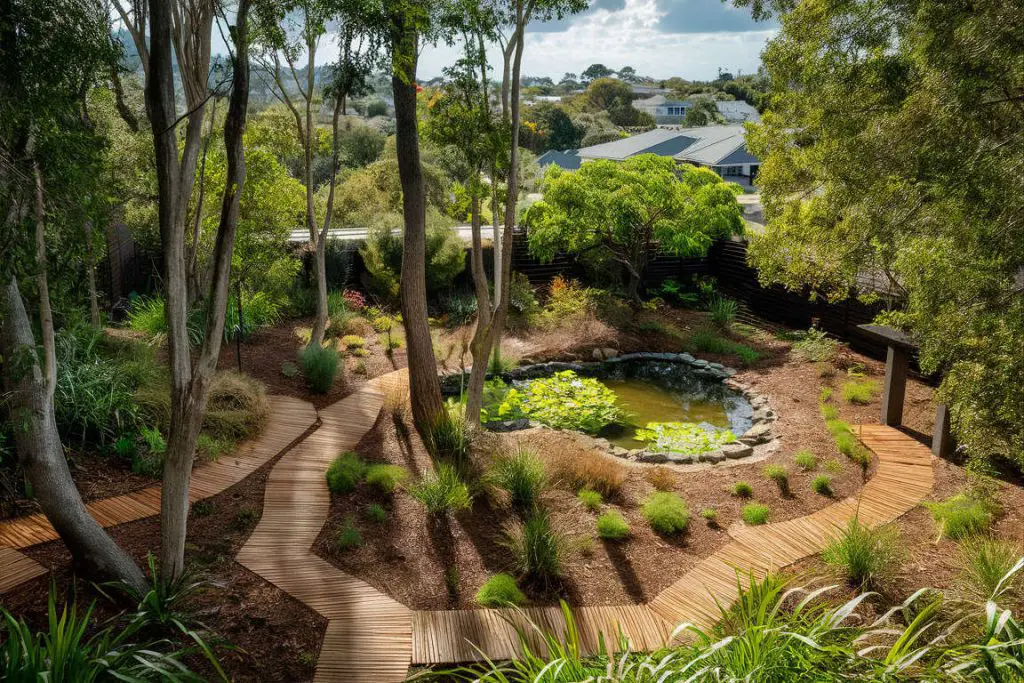
- Description: Create a woodland-inspired garden with native trees and understory plants. Use timber pathways to meander through the space and include a small pond for wildlife.
- Size: Suitable for medium to large gardens.
#11. Timber Pathway Garden
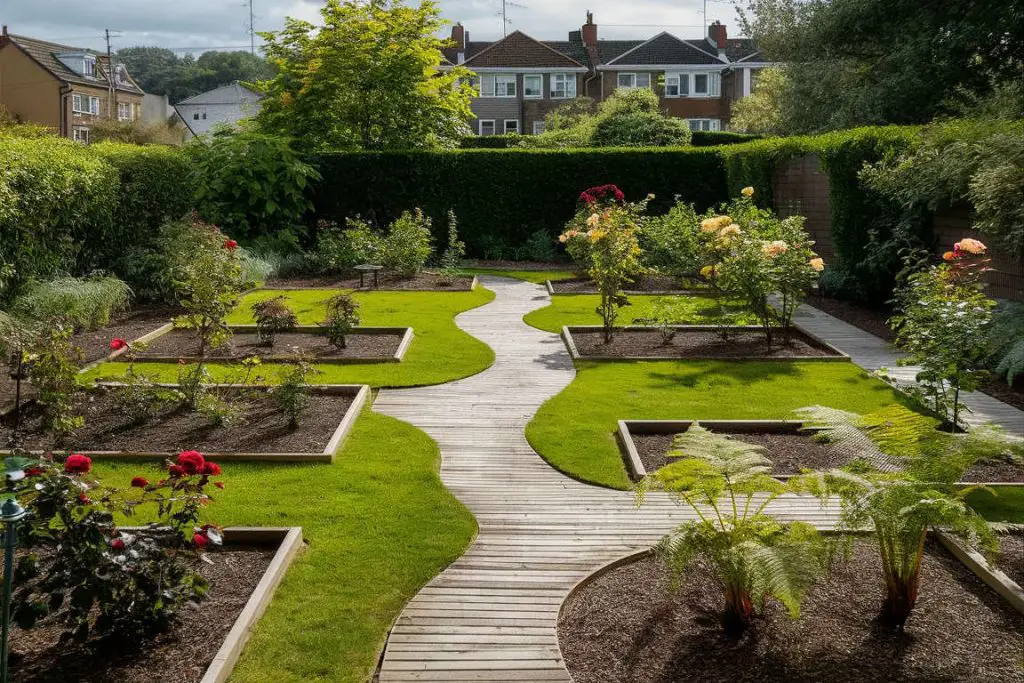
- Description: Design a garden with winding timber pathways leading to various garden zones. Use sun-loving plants like roses in open areas and shade-tolerant plants under trees. Add small timber benches for relaxation.
- Size: Ideal for medium-sized gardens.
#12. Balcony Water Feature Garden
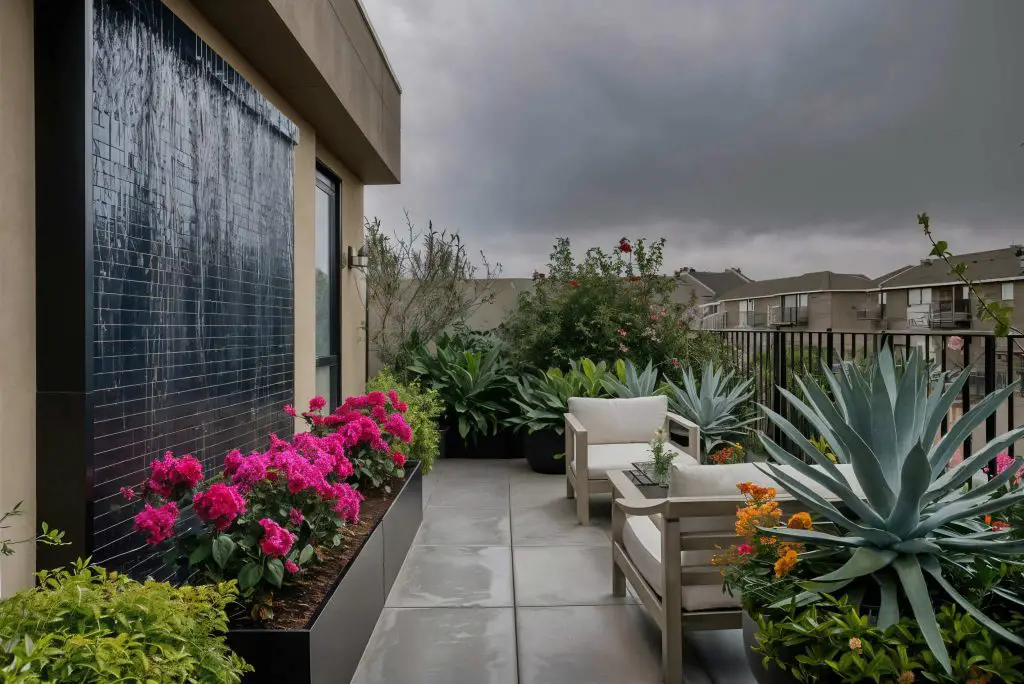
- Description: Install a vertical water feature on a balcony wall. Surround it with containers of shade-tolerant plants like fuchsias and sun-loving succulents. Use lightweight timber furniture to complete the look. The water feature brings an element of calm and serenity to the space and would make a great spiritual garden or mediating space.
- Size: Perfect for small balconies.
#13. Timber and Stone Courtyard
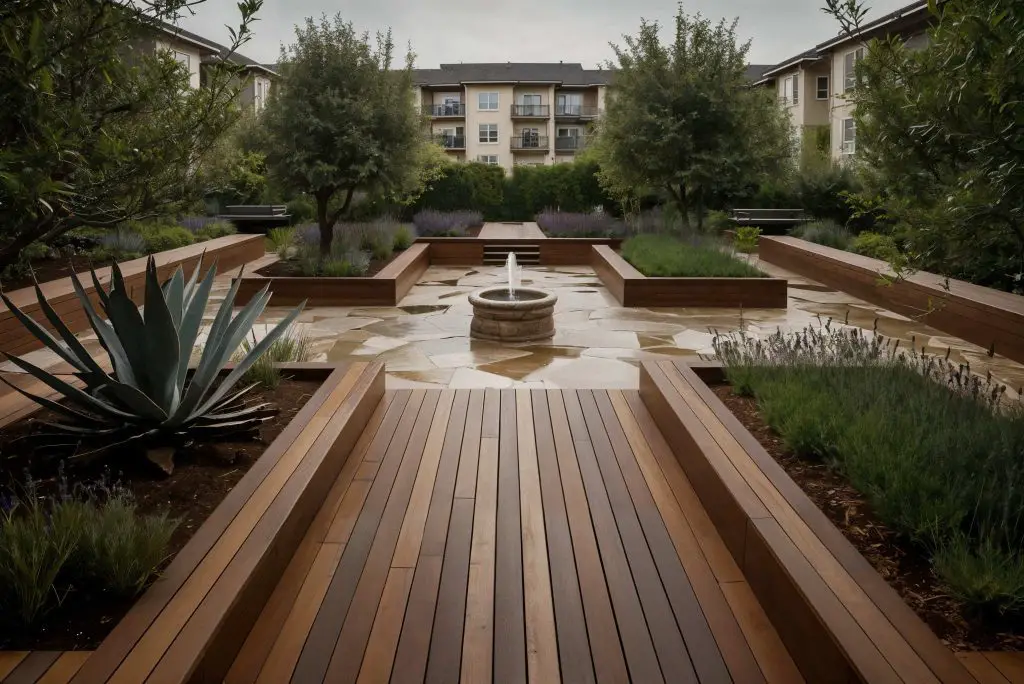
- Description: Combine timber decking with natural stone paving. Plant climate-resilient species such as agaves and lavender. Add a small water feature, like a stone fountain, for tranquility.
- Size: Suitable for small to medium courtyards.
#14. Container Herb Garden
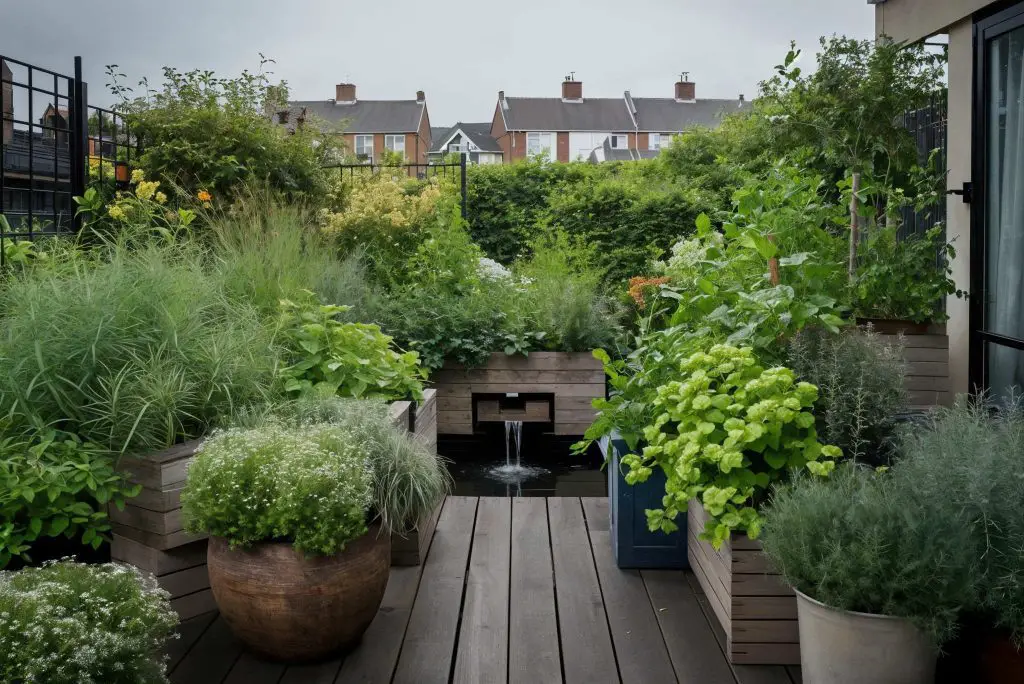
- Description: Use a variety of containers to grow a mix of herbs that thrive in both sun and shade. Incorporate timber planters for an eco-friendly touch. Add a small water feature to create a calming ambiance.
- Size: Perfect for patios and balconies.
#15. Sustainable Vertical Garden

- Description: Create a vertical garden using timber frames and planters. Include a mix of climate-resilient plants like ivy and flowering vines. Add a small water feature at the base to support the microclimate.
- Size: Suitable for small walls or balcony spaces.
Incorporating These Landscaping Ideas into Your Garden
Bringing innovative landscaping ideas into your garden starts with understanding your space and its unique conditions. Assess the amount of sunlight your garden receives, identify areas of shade, and consider the climate. This knowledge helps in selecting the right plants and materials for your design.
Start by integrating water features, which not only enhance the aesthetic appeal but also create supportive microclimates for plants. Small ponds, fountains, or even tabletop water features can add a soothing element to your garden.
Balancing plant choices is crucial. Use a mix of sun-loving and shade-tolerant plants to add diversity and ensure year-round interest. Climate-resilient species are essential for maintaining a healthy garden despite varying weather patterns. These plants are hardy and require less maintenance, making them ideal for sustainable gardening.
Incorporate timber elements for their natural beauty and durability. Timber can be used in decking, pathways, planters, and even as structural elements like pergolas. Choosing sustainably sourced or reclaimed timber adds an eco-friendly touch to your garden.
For smaller spaces or urban settings, container gardens and vertical gardens are excellent options. They maximize limited space and allow for creative arrangements. Containers can be moved easily, providing flexibility in garden design.
Final Thoughts
Thoughtfully combining these elements, you can create a garden that is not only beautiful but also environmentally conscious and resilient. Whether you have a tiny balcony or a large backyard, these ideas can transform your outdoor space into a modern, sustainable retreat.
